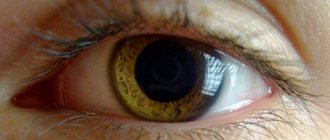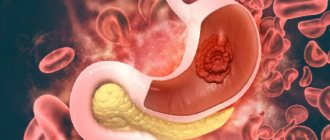Anthrax is an acute infectious disease caused by the bacterium Bacillus anthracis (BA). BA is especially dangerous because it typically occurs in the environment (such as soil) as microscopic endospores.
These spores, as they are commonly called, are dormant structures that can survive for many years, even when exposed to very hot or cold temperatures, dry conditions, chemicals, radiation or other factors. Contact with anthrax bacteria or viable spores can result in severe infection in both humans and animals.
Although anthrax is a very serious illness, it is not contagious like the cold or flu. People and animals can become infected in a variety of ways: through the skin, inhalation or ingestion, contact with anthrax-infected animals, contaminated animal products, or other sources of anthrax spores.
Biological agents, such as anthrax, have a direct impact on worker safety, and biological assessments are used to determine the extent of exposure.
What is anthrax
Anthrax is a particularly dangerous disease that appears in humans after infection with the bacterium Bacillus anthracis. The incubation period of the disease is approximately 3–5 days. Then specific carbuncles appear on the patient’s skin, or sepsis occurs. Therefore, diagnosis must be accurate and treatment prompt.
The causative agent of anthrax
The bacterium Bacillus anthracis is a cylindrical rod with spores inside. They are the ones who protect the bacterium when it enters a hostile environment, for example, into a body with a high temperature. The microorganism is very tenacious - it can reproduce in an oxygen environment or in an anaerobic environment. However, at 100 degrees it dies.
Reference!
Livestock such as horses and sheep are highly susceptible to the disease.
There are two areas where bacteria appear:
- Primary.
The bacterium appears and actively develops when the soil is infected. Most often this is due to improper burial of sick livestock.
- Secondary.
In this case, the bacteria spreads rather than originates and progresses. The spread is associated with rains, snow melting, etc.
Sources
- Sun KR., Lv HF., Chen BB., Nie CY., Zhao J., Chen XB. Latest therapeutic target for gastric cancer: Anthrax toxin receptor 1. // World J Gastrointest Oncol - 2021 - Vol13 - N4 - p.216-222; PMID:33889273
- Banger S., Pal V., Tripathi N.K., Goel AK. Development of a set of three real-time loop-mediated isothermal amplification (LAMP) assays for detection of Bacillus anthracis, the causative agent of anthrax. // Folia Microbiol (Praha) - 2021 - Vol - NNULL - p.; PMID:33834427
- Abdel-Glil MY., Chiaverini A., Garofolo G., Fasanella A., Parisi A., Harmsen D., Jolley KA., Elschner MC., Tomaso H., Linde J., Galante D. A whole genome-based gene-by-gene typing system for standardized high resolution strain typing of Bacillus anthracis. // J Clin Microbiol - 2021 - Vol - NNULL - p.; PMID:33827898
- Gonti S., Westler WM., Miyagi M., Bann JG. Correction to “Site-Specific Labeling and 19F NMR Provide Direct Evidence for Dynamic Behavior of the Anthrax Toxin Pore ϕ-Clamp Structure.” // Biochemistry - 2021 - Vol60 - N15 - p.1242; PMID:33825454
- Burtscher J., Etter D., Biggel M., Schlaepfer J., Johler S. Further Insights into the Toxicity of Bacillus cytotoxicus Based on Toxin Gene Profiling and Vero Cell Cytotoxicity Assays. // Toxins (Basel) - 2021 - Vol13 - N4 - p.; PMID:33805220
- Jia Q., Bielefeldt-Ohmann H., Maison RM., Masleša-Galić S., Cooper SK., Bowen RA., Horwitz MA. Replicating bacterium-vectored vaccine expressing SARS-CoV-2 Membrane and Nucleocapsid proteins protects against severe COVID-19-like disease in Hamsters. // NPJ Vaccines - 2021 - Vol6 - N1 - p.47; PMID:33785745
- Otieno FT., Gachohi J., Gikuma-Njuru P., Kariuki P., Oyas H., Canfield SA., Blackburn JK., Njenga MK., Bett B. Modeling the spatial distribution of anthrax in southern Kenya. // PLoS Negl Trop Dis - 2021 - Vol15 - N3 - p.e0009301; PMID:33780459
- Elton L., Haider N., Kock R., Thomason MJ., Tembo J., Arruda LB., Ntoumi F., Zumla A., McHugh TD. Zoonotic disease preparedness in sub-Saharan African countries. // One Health Outlook - 2021 - Vol3 - N1 - p.5; PMID:33778376
- Arora M., Lakshmi R. Maternal vaccines-safety in pregnancy. // Best Pract Res Clin Obstet Gynaecol - 2021 - Vol - NNULL - p.; PMID:33773923
Symptoms of anthrax
Anthrax can manifest itself in several forms:
- cutaneous,
- pulmonary,
- intestinal,
- sepsis.
Cutaneous form
In almost all cases of infection with the bacterium, patients suffer from cutaneous anthrax, but it can occur in parallel with another, for example, pulmonary anthrax.
The bacillus enters the human body through open wounds - even the smallest ones, for example, scratches or cracks on the palms. Most often, carbuncles and swelling appear on the hands and face, less often on the neck, torso and legs.
In most cases, patients are diagnosed with one large carbuncle, but in severe stages their number can exceed twenty.
If the face, head and/or neck are affected, the course of the disease is most severe. This is due to the proximity of the source of infection to the respiratory tract. There are cases where patients have died from suffocation even before the bacterium destroys the body and its immune functions.
Skin ulcers can be of several types:
- Carbunculous.
The most common variant of anthrax skin ulcer. At first a small nodule appears, but within a day it greatly increases in size. After a short period of time, the bubble bursts and a black ulcer with swelling appears. The bottom of the carbuncle is hard and a scab forms on it.
- Edematous.
Severe swelling appears in the area of infection. Over time, a carbuncle forms in its place. One of the rarest forms of ulcers, the most severe.
- Bullous.
First, large blisters with hemorrhagic fluid form on the skin. After approximately 5–10 days, ulcers with necrosis appear in their place.
- Erysipeloid.
Several blisters appear on the patient's skin. After opening them, ulcers with a dense black crust form. A rare form, but it occurs more easily than others.
Pulmonary form
The disease manifests itself gradually: first the patient’s temperature rises, then muscles begin to ache, general weakness and cough with runny nose are observed. Chest discomfort is often present.
Important!
The pulmonary form progresses rapidly.
In just 1–3 days, clinical manifestations reach their peak. Signs of pulmonary anthrax:
- temperature up to 40 degrees,
- chills,
- intoxication,
- rapid breathing,
- dyspnea,
- blue skin.
Patients complain of chest discomfort, often similar to the pain of a heart attack. The cough gradually becomes stronger and appears more often; sputum begins to be released quite quickly, almost always foamy and bloody. Swollen lymph nodes put pressure on the trachea, so most patients suffer from suffocation or other respiratory problems.
Anthrax in the lungs progresses very quickly. A severe form often leads to the development of heart failure, pulmonary edema, and this can lead to death within a few days from the moment of diagnosis.
Intestinal form
One of the rarest forms of ulcers. However, it is this that is the most difficult. Develops within 2–5 days after eating contaminated products. The main symptoms of the intestinal form of ulcers:
- severe abdominal pain,
- heat,
- nausea and vomiting with bile and blood,
- loss of appetite
- bloody diarrhea.
The abdomen may increase in size due to the concentration of fluid. This, in turn, leads to intestinal obstruction. Moreover, the oropharynx may become infected.
Reference!
Patients often complain of sore throat symptoms several days after eating contaminated meat.
But, unlike a sore throat, with an ulcer, swelling of the neck quickly develops due to the appearance of carbuncles and swelling of the lymph nodes. The skin takes on a bluish tint, and the blood vessels appear in scarlet and bright red lines. The disease leads to significant impairment of swallowing functions, bleeding from the mouth, and breathing problems. If medical care is not provided, the patient dies from asphyxia.
Septic anthrax
This variant of the disease is quite rare and can manifest itself as a consequence of any of the above forms. Sepsis is characterized by the circulation of bacteria and its toxins through the body's circulatory system. This leads to damage to different organ systems.
Important!
Released toxins can provoke infectious-toxic shock.
The main symptoms of the septic form of anthrax:
- high temperature up to 41℃,
- chills,
- dyspnea,
- rapid breathing,
- pain in the sternum,
- cough with frothy and bloody sputum,
- stomach ache,
- nausea and bloody vomiting,
- bloody diarrhea.
How does infection occur?
Sources of infection are animals sick with anthrax or their corpses. Animal corpses are the most dangerous, since as a result of the death of infected livestock, pastures, water bodies and places where animals are kept become active foci of infection for decades. Also, the foci of anthrax infection in the overwhelming majority of cases are old, poorly fenced and unguarded cattle burial grounds, where spores of this disease live in the soil and grass for decades.
Animals who come into contact with the soil, at a watering hole, or by eating contaminated grass become ill with anthrax. And hay collected in unfavorable areas can cause infection of animals even in winter.
Humans become infected from animals through contact with wool and skin, when cutting up carcasses, providing veterinary care, and by eating contaminated meat products. Infection through horsefly bites and airborne dust is possible. A person's susceptibility to anthrax does not depend on the age, gender and other physiological characteristics of the body; it is associated with the routes of infection and the magnitude of the infectious dose.
Incubation period
As a rule, the incubation period of infection is several days, but it can be extended from 8 to 14 days and shortened to several hours.
Complications after anthrax
Even with successful treatment, anthrax can cause many complications. For example, meningitis, brain swelling, pulmonary edema, asphyxia, peritonitis, bleeding in the gastrointestinal tract, intestinal obstruction, etc.
If the disease has managed to affect several organ systems, a septic form and toxic shock may occur.
However, over the past few decades, the mortality rate due to anthrax has been significantly reduced. If in the middle of the twentieth century almost 90% of patients died from the pulmonary form of the disease, now no more than 40%.
With the cutaneous form, death occurs in less than 20% of cases, and with the intestinal form - in 25–60%, which depends on the speed of medical care and the nature of the disease.
Classification
Anthrax is divided into two types - cutaneous and general (generalized). In turn, each of these varieties has several more forms.
There are three types of skin forms of the disease:
- Carbunculous - manifestations on the skin change from red spots to nodules, and then to dark ulcers. The patient is worried about weakness, chills, fever .
- Edematous - in the first days of the disease, large swelling appears on the skin. Later, a scab is observed, around which the skin turns red.
- Bullous - the disease begins with the appearance of blisters on the skin. Later they burst, resulting in extensive ulcers. Later, a characteristic black crust appears on their bottom.
The general (generalized) form is divided into three types:
- Pulmonary – the respiratory organs are affected. With this form of the disease, the prognosis is most often unfavorable.
- Intestinal - very difficult, there are signs of gastrointestinal damage and general intoxication. High risk of death, even if the patient is provided with adequate treatment.
- Septic – sometimes develops immediately, sometimes as complications of other forms. There is general intoxication and bleeding in the internal organs. Inflammation of the membranes of the brain and failure of internal organs often occur.
Diagnosis of anthrax
Diagnosis of anthrax takes place in three stages:
- Microscopic examination of patient biological materials
. For example, sputum, skin, feces, pleural effusion, etc.
- Determination of bacterial culture
by sowing in a specially created environment.
- Bioassay
on animals from the laboratory.
The doctor performs an allergy test for anthraxine. Additionally, a number of laboratory tests are carried out.
If this is a pulmonary form of the ulcer, then the patient is sent for an x-ray. Symptoms of pleurisy or pneumonia can often be seen in the image. Then an additional visit to a pulmonologist will be required. If it is a skin ulcer, you will need to consult a dermatologist.
Important!
All diagnostic procedures are carried out in specially equipped laboratories. Direct contact with the patient is prohibited due to the increased risk of the disease.
Diet
Diet 13 table
- Efficacy: therapeutic effect after 4 days
- Time frame: no more than 2 weeks
- Cost of products: 1500-1600 rubles per week
Patients are recommended to follow Diet 13 table . Recommended dishes include lean meat and fish, slimy soups and low-fat broths, dairy products, eggs, cereal porridges, vegetables, fruits, tea, rose hip decoction, etc.
A number of products are prohibited from consumption. This list includes:
- Spicy dishes.
- Fat meat.
- Fresh bread and pastries.
- Sausages and canned food.
- Fat cheeses and sour cream.
- Products that increase gas formation - legumes, cabbage.
- Coffee, alcohol.
More detailed information is contained in the “diet” presentation.
Treatment of anthrax
Anthrax is treated with penicillin. It is administered intramuscularly for a week or more until all symptoms of intoxication are eliminated. Additionally, the doctor prescribes doxycycline or levofloxacin. Simultaneously with all procedures, immunoglobulin is administered directly against anthrax bacillus in a warm form 30 minutes after prednisolone.
In severe forms of the disease, intensive therapy is carried out. Aseptic dressings are applied to the locations of carbuncles and ulcers. In this case, removal of formations is not allowed - this can lead to the spread of infection throughout the body.
The most favorable prognosis is for the skin form. However, modern medicine makes it possible to effectively help patients with different types of anthrax. The main condition for a successful recovery is prompt seeking of medical help.
In addition to treating the patient himself, a number of veterinary and sanitary measures are carried out. If a person falls ill with anthrax, this means that there is a bacterial outbreak among animals or in a certain area. If it is not eliminated, it can provoke an epidemic.
The causative agent of infection
Bacillus anthracis is an anthrax bacillus, one of the world's largest microbes. The bacillus itself is easily destroyed - it quickly dies when heated and using conventional disinfectants. But the spore of this bacterium is of a completely different nature. The spore of the anthrax bacillus can remain in the strongest disinfectant solutions for hours, can easily withstand a temperature of +110° C for up to 40 minutes when sterilized in an autoclave, and dry heat at a temperature of 140° C kills the spores only after 2.5–3 hours. Anthrax spores live in the ground for decades - so a pasture contaminated with the feces and urine of sick animals can retain and spread the deadly infection for 50 years or more.
Prevention of anthrax
The most effective method of preventing anthrax is compliance with all sanitary and hygienic rules when working with animals. It is important to regularly vaccinate livestock and people who are particularly susceptible to infection.
If a source of infection is identified, it is necessary to urgently eliminate it and provide emergency assistance to everyone who could possibly become infected. For this purpose, preventive antibiotic therapy is carried out. If necessary, quarantine will be organized.
Anthrax is treatable, despite its severe course. If you consult a doctor in a timely manner, the chance of adverse consequences is reduced to almost zero.
Risk areas and precautions
Photo by Reuters
The incubation period of anthrax is several days.
Herbivores
During periods of increased danger and beyond, it is necessary to be very careful when contacting large and small cattle, horses, camels and pigs and not allow children to play with these animals.
Flies, horseflies
Protect windows and entrance doors with screens. Immediately destroy these insects if they enter living quarters and kitchens, especially in houses outside the city, in close proximity to livestock.
Contaminated animal feed
Do not buy animal feed from unverified manufacturers, beware of buying cut grass and hay from random sellers, this grass could have been cut in disadvantaged areas.
Corpses of infected animals
Never visit burial sites of sick animals, try to avoid any routes that pass through these places.
The soil in which the corpse of a dead animal was buried
Contaminated soil remains infectious for decades. Never buy land or settle near such areas, even if soil surface tests have not revealed any hazards. The main accumulations of anthrax spores in cattle burial grounds are deep underground, and any construction or excavation work, as well as storm and flood waters, can easily bring a deadly infection to the surface at any time that can infect animals and people.
Contaminated animal raw materials
Great care should be taken when purchasing skins, any fur and leather products of small handicraft production. Do not buy such goods at spontaneous markets and highways; ask private sellers for a license.
Meat from infected animals
Buy any meat products only in special pavilions, in compliance with all sanitary standards and measures. Never purchase raw meat and meat products from dubious sellers who spontaneously sell meat in markets, in the courtyards of private houses, or directly from open trunks of cars on the highways.









